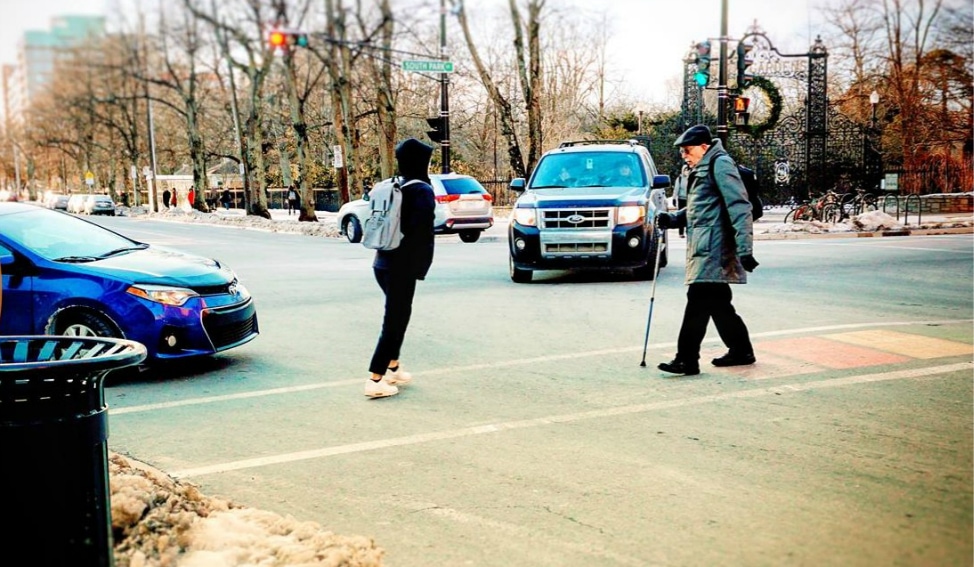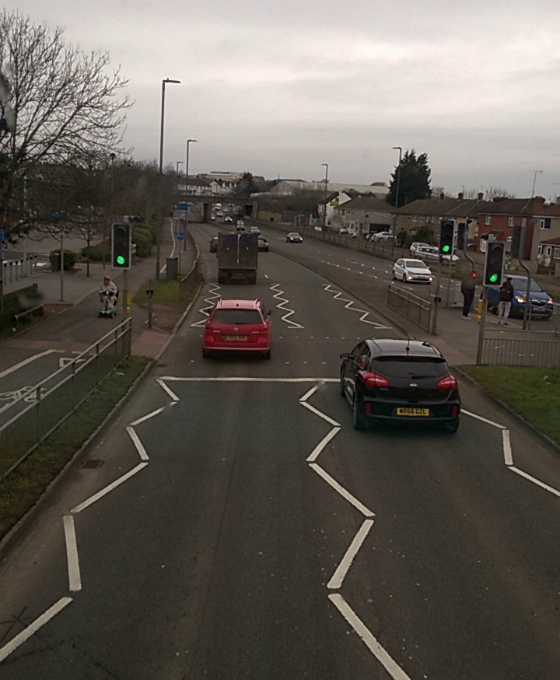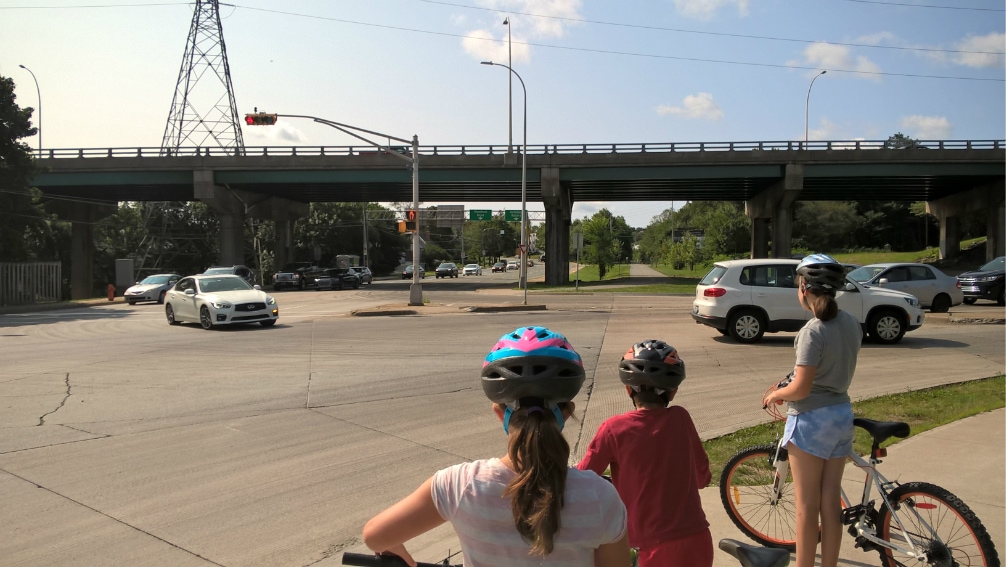KJIPUKTUK (Halifax) – I watched as a visibly disabled man walking with a cane moved slowly across a crosswalk on a walk sign at a signalized intersection.
A car wanting to turning left edged towards him without stopping. He stopped and politely waved the driver past before continuing to finish his crossing.
As he reached the other side and saw me watching him, his shrug and upward glance said it all – What can you do? A stroll across a crosswalk involves conflict with traffic, period.

I’m a fairly recent migrant to Halifax from England. I have always walked, cycled or used public transport much more than a private vehicle.
If I knew before I emigrated here that the thing I would miss the most about my homeland was safe crosswalks, I would be very surprised.

In Britain, crosswalks are built for disabled people including the blind. Crosswalks at signalised intersections have pedestrian islands and dedicated times for pedestrians to cross when turning traffic has a red light.
Mid-block crosswalks over narrow roads have pedestrian islands, and those over wider main roads have pedestrian activated traffic lights which stop traffic in both directions. Over decades of walking in Britain every day, occasions when a car passed through a crosswalk as I was on it were extremely rare. Here it happens to me and my family multiple times a day.
Though drivers in Nova Scotia are very courteous and give way to pedestrians when they are seen, the crosswalks have many inherent dangers which do not exist in my home country – wide four or even five lane crosswalks with high overhead lights which are sometimes not seen by drivers, signalized intersections where traffic has a green light to turn left into the road which has the walk sign on, right turns on a red, and crosswalks which have overhead lit signs but no flashing lights.

I do not own a car and I walk a lot. Each day has its close calls on the crosswalks. In my neighborhood (and presumably many others in Nova Scotia) there is an eerie absence of the people who need to walk safely the most – particularly the elderly and disabled. When I have spoken to older people, they have told me they avoid more dangerous crosswalks especially over signalized intersections, and they rely on the crosswalk flags to draw drivers attention. And the statistics show why we have good reason to fear crossing the road – over 2017, 68% of incidents where vehicles hit pedestrians were in crosswalks, an 18% increase on the previous year.
Halifax Councillor Shawn Cleary blogged that the most common issue he heard on his 2016 election campaign was anxiety over unsafe streets.
That’s not surprising – our neighbourhoods are typically divided by high speed wide roads which are challenging to traverse, and often lack sidewalks.
Crosswalks might be 300 metres apart or more, so people cross these dangerous roads outside of crosswalks, including children on their way to and from school.
What has been missing from the discussion is the impact of the danger for pedestrians on mobility in our neighbourhoods and our travel habits – parents who will not allow their children to walk to school alone due to safety concerns, or elderly and disabled people who cannot walk to the shops or see friends and family down the street due to unsafe crosswalks.
Initial hope over the impact of funding on improved walkable streets in our communities due to the Integrated Mobility Plan has already taken a hit – the budget for desperately needed new sidewalks has been reduced, not increased. Halifax is preoccupied with Downtown improvements and commuter travel and it is likely that much of the $189 million set aside for the Integrated Mobility Plan improvements will be spent catering to peak/rush hour movements, including a potential new commuter rail service and new ferry routes.
How about making sure our children, disabled and elderly people can get out and about independently and safely on their own two feet? In my view, this should be first and foremost in our minds when we consider safety and mobility in Nova Scotia.
We could see some dazzling progress with transport over the next decade or so – perhaps a well-used regular train service, new ferries, more cycle lanes and bus rapid transit.
But until we assess how well our infrastructure meets the needs of people who are slower on their feet or are blind, the people who need safety and mobility the most will remain cursed with dangerous highways to cross to get to neighbourhood services and facilities, and crosswalks which are not up to the fundamental and basic task of stopping traffic and ensuring safe passage for all.
If you or family members are affected by the issues in this article, please join HRM Safe Streets for Everyone or contact the Crosswalk Safety Society if your local crosswalk lacks flags.
If you can, please support the Nova Scotia Advocate so that it can continue to cover issues such as poverty, racism, exclusion, workers’ rights and the environment in Nova Scotia. A paywall is not an option for us, since it would exclude many readers who don’t have any disposable income at all. We rely entirely on the kindness of occasional one-time donors and a small group of loyal monthly sustainers.



